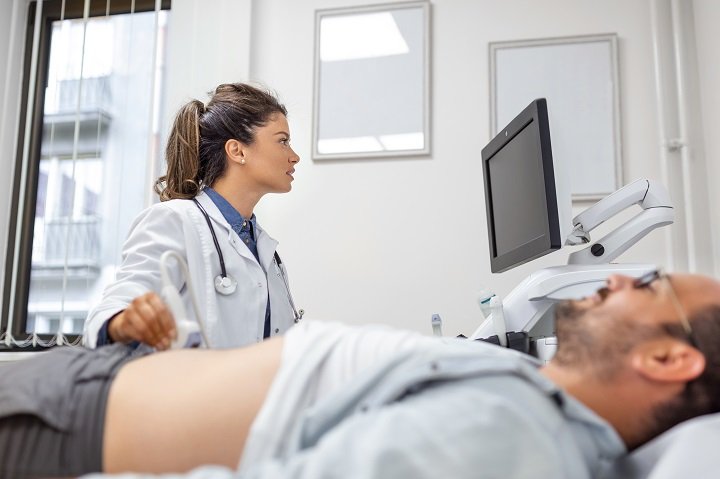Colorectal Screenings Explored: Your Essential Guide
"Health is a crown that the healthy wear, but only the sick can see." This profound saying encapsulates the essence of prioritizing our well-being. In the landscape of health, one pivotal checkpoint stands out for individuals aged 50 and above or those with a familial history of colorectal cancer. To detect the disease at an earlier stage, the best process is to avail colon cancer screening.
In this comprehensive guide, we embark on an expedition to unravel these screening methods, illuminating the best pathway to safeguarding your colorectal health. Among these choices, "colonoscopy screening" is an anchor, grounding us toward proactive well-being.
1 . Diving Deep: The Colonoscopy Screening Examination
The Process: During a colonoscopy screening, the medical professional inserts a long, flexible tube with a tiny camera on its tip into the rectum. This camera then travels the entire colon length, allowing the doctor to inspect for polyps or other abnormalities.
Frequency: Screenings occur every ten years, except when detecting polyps. In that case, screenings may become more frequent.
Upsides: This method is considered the gold standard in colorectal screenings. It provides a comprehensive view of the colon and doctors can instantly remove any discovered polyps.
Drawbacks: A colonoscopy requires thorough bowel preparation. The procedure might be uncomfortable and there's a slight risk of complications.
2 . The Digital Era: Virtual Colonoscopy
The Process: A virtual colonoscopy or a CT colonography, utilizes X-rays and computers to generate images of the entire colon. Medical professionals then analyze these images for any abnormalities.
Frequency: Every five years.
Upsides: This method is less invasive than a traditional colonoscopy screening. Plus, there's no need for sedation.
Drawbacks: The screening does not allow for the removal of polyps. If any are detected, a conventional colonoscopy will be necessary. Also, radiation exposure is a concern.
3 . A Partial Glimpse: The Flexible Sigmoidoscopy
The Process: This method examines the inside of the rectum and the sigmoid colon (the last third of the colon) using a slender, flexible tube
Frequency: Every five years.
Upsides: It's less invasive than a colonoscopy and doesn't typically require sedation.
Drawbacks: It only inspects part of the colon. The presence of polyps or other irregularities may necessitate a full colonoscopy.
4 . Detecting the Hidden: Fecal Occult Blood Test
The Process: This test searches for traces of blood in the stool, which could indicate polyps or cancer.
Frequency: Annually.
Upsides: This test offers a non-invasive option that you can conveniently perform at home.
Drawbacks: It may produce false positives, which can be anxiety-inducing. Moreover, a follow-up colonoscopy screening is often needed if blood is detected.
5 . Decoding the Signs: Stool DNA Test
The Process: This method examines stool samples for DNA markers that could signify the presence of colorectal cancer or its precursors.
Frequency: Every three years.
Upsides: It offers a non-invasive option that individuals can complete in the privacy of their homes.
Drawbacks: As with the fecal occult blood test, positive results necessitate a subsequent colonoscopy. The test might not detect all cancers and can be more expensive than other methods.
The Clear Choice: Why Colonoscopy Stands Out
Precision and Proactiveness: A traditional colonoscopy gives the doctor a clear, direct view of the entire colon. That means they cannot only detect polyps or irregularities with high accuracy but also remove them on the spot. This proactive approach ensures that any potentially harmful growths are dealt with immediately, eliminating the need for a second procedure.
Peace of Mind: A comprehensive colonoscopy screening provides unparalleled peace of mind. Thoroughly examining your entire colon boosts confidence in your results and colorectal health.
Personalized Health Assessment: The direct feedback during a colonoscopy allows your healthcare provider to offer a tailored health assessment, discussing findings in real time and planning for necessary next steps.
Better Safe Than Sorry: While the preparation might be a tad uncomfortable, the benefits far outweigh the temporary inconvenience. A single colonoscopy every ten years is a small commitment to make for the invaluable insights it offers into your health.
Your Path to Colorectal Wellness Starts Here
Explore the world of proactive wellness with Digestive Disease Specialists by your side. Uncover personalized colorectal colonoscopy screening solutions that align with your unique needs and concerns. Our expert insights empower you to make informed choices for a healthier tomorrow. Don't miss out on the chance to safeguard your well-being – take the next step toward optimal colorectal health with us!
**Disclaimer: This blog content does not offer a doctor's advice and creates no relationship between any patient and care provider.

